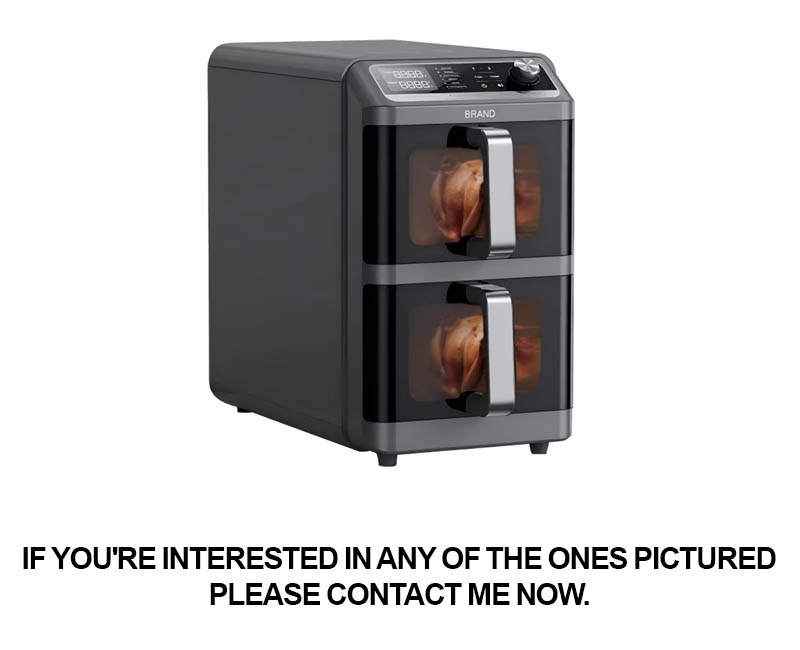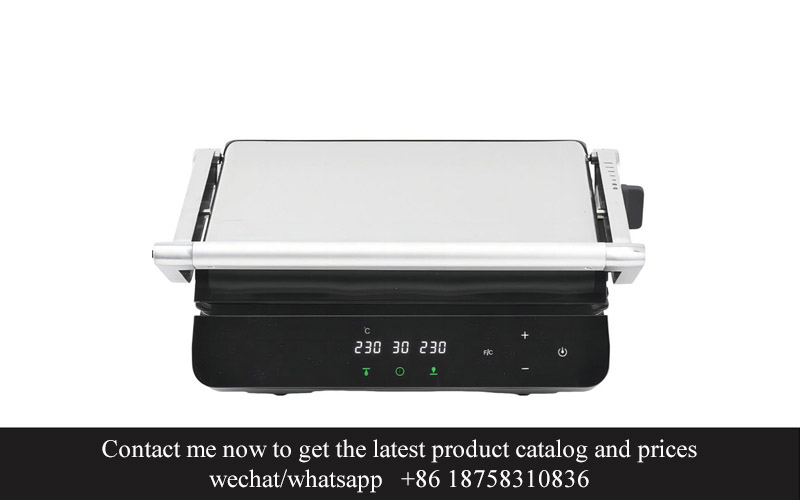Address
304 North Cardinal
St. Dorchester Center, MA 02124
Work Hours
Monday to Friday: 7AM - 7PM
Weekend: 10AM - 5PM
Address
304 North Cardinal
St. Dorchester Center, MA 02124
Work Hours
Monday to Friday: 7AM - 7PM
Weekend: 10AM - 5PM

In a world where convenience and quality are paramount, the evolution of the sandwich industry has become a cornerstone of culinary innovation. Sandwiches, once a simple meal option, have transformed into a sophisticated, diverse, and increasingly sought-after food category. This shift has been fueled by changing consumer preferences, technological advancements, and a relentless pursuit of efficiency. This article delves into the dynamic world of sandwich production, highlighting the pivotal role of continuous operation sandwich grill plants and the future trends shaping this industry.
In the bustling heart of the food service industry, a remarkable innovation has emerged: the continuous operation sandwich grill plant. These sophisticated systems are revolutionizing the way sandwiches are produced, offering a blend of efficiency, consistency, and speed that caters to the ever-growing demand for quick-service meals. Let’s delve into the world of these state-of-the-art plants, exploring their design, functionality, and the impact they have on the sandwich industry.
The continuous operation sandwich grill plant is a marvel of modern engineering, designed to streamline the sandwich-making process from start to finish. These plants are equipped with conveyor belts that move raw ingredients through a series of stations, each dedicated to a specific task. From slicing bread to applying condiments, these automated systems ensure that every sandwich is crafted with precision and care.
One of the standout features of these plants is their ability to maintain a consistent temperature throughout the grilling process. This is crucial for achieving that perfect, golden-brown crust that customers love. The precise heat control ensures that every sandwich is cooked to perfection, without the risk of burning or undercooking.
The heart of the continuous operation sandwich grill plant lies in its ability to handle large volumes of sandwiches with unparalleled speed. The conveyor system allows for a continuous flow of raw materials, reducing downtime and maximizing output. This efficiency is particularly valuable in high-traffic areas where customers expect fast service without compromising on quality.
As the demand for convenience and speed in the food service industry continues to rise, these sandwich grill plants have become a beacon of innovation. They are not just limited to commercial kitchens; they are also being adopted by food truck operators, convenience stores, and even in the manufacturing of pre-packaged sandwiches for retail sale.
One of the key advantages of these plants is their versatility. They can be customized to suit a variety of sandwich recipes, from classic deli sandwiches to gourmet creations. The modular design allows for easy adjustments and upgrades, ensuring that the plant can evolve with the changing tastes of consumers.
In terms of functionality, the continuous operation sandwich grill plant is a marvel of modern technology. The system is equipped with advanced sensors that monitor the cooking process, adjusting the temperature and timing as needed to ensure consistent quality. This level of automation reduces the need for human intervention, freeing up staff to focus on other tasks or customer service.
Safety is another critical aspect of these plants. They are designed with multiple safety features to prevent accidents and ensure that the cooking process is as safe as possible. From automatic shutdown mechanisms to non-slip surfaces, every detail is crafted with the well-being of both employees and customers in mind.
The continuous operation sandwich grill plant also offers significant environmental benefits. By reducing the amount of waste generated during the sandwich-making process and by using energy-efficient heating systems, these plants contribute to a more sustainable food production model. This eco-friendly approach is becoming increasingly important as consumers become more conscious of their environmental footprint.
In the realm of industry trends, the integration of these sandwich grill plants with other food processing equipment is a notable development. By integrating with systems for slicing, packaging, and even portion control, these plants are becoming part of a larger, more efficient food production line. This integration not only increases efficiency but also allows for better inventory management and waste reduction.
Several businesses have already embraced the technology, and their success stories are testament to the benefits of these continuous operation sandwich grill plants. From fast-food chains to independent sandwich shops, the adoption of these systems has led to increased productivity, happier customers, and a more streamlined operation.
As the food service industry continues to evolve, the continuous operation sandwich grill plant is poised to play an even greater role. The technology is expected to become more advanced, with even greater automation and the ability to produce a wider variety of sandwich styles. The future holds promise for even more innovative solutions that will further enhance the efficiency and quality of sandwich production.
In conclusion, the continuous operation sandwich grill plant is a testament to the power of innovation in the food service industry. Its ability to produce high-quality sandwiches at a remarkable pace, while remaining versatile, safe, and environmentally friendly, makes it a game-changer for any establishment looking to stay competitive in the fast-paced world of food service.

The sandwich industry has experienced a remarkable surge in popularity over the past decade, transforming from a simple meal option to a global phenomenon. This meteoric rise has been fueled by a variety of factors, each contributing to the demand for innovative solutions in foodservice and culinary technology. From the convenience of fast-paced lifestyles to the culinary creativity of chefs, the sandwich industry has become a driving force for innovation.
With the advent of health-conscious consumers seeking balanced meals, the demand for fresh, customizable sandwiches has skyrocketed. These individuals are no longer satisfied with pre-packaged, processed foods; they crave fresh ingredients and the ability to tailor their meals to their dietary preferences. As a result, sandwich shops and cafes have popped up everywhere, each vying for a slice of the burgeoning market.
The rise of social media has also played a significant role in the sandwich industry’s growth. Platforms like Instagram and TikTok have become hotbeds for food influencers, showcasing the artistry and variety of sandwiches. Chefs and sandwich makers have taken to these platforms to share their creations, generating buzz and sparking trends that spread like wildfire. This digital exposure has not only increased the visibility of sandwich shops but has also inspired a new generation of sandwich enthusiasts.
The convenience factor cannot be overlooked either. As people’s lives become increasingly fast-paced, the need for quick, satisfying meals has never been greater. Sandwiches offer the perfect solution, combining portability with a variety of flavors and ingredients. This convenience has made sandwiches a go-to choice for busy professionals, students, and anyone on the move.
The rise of the sandwich industry has also led to a demand for efficient and scalable foodservice equipment. Operators are looking for solutions that can keep up with the high volume of sandwiches being produced while maintaining quality and consistency. This has spurred a wave of innovation in the kitchen, with manufacturers pushing the boundaries of what is possible with sandwich-making technology.
One of the key areas of innovation has been the development of continuous operation sandwich grill plants. These specialized machines are designed to streamline the grilling process, allowing for high-volume production without compromising on the quality of the final product. The ability to grill multiple sandwiches at once not only increases efficiency but also reduces the need for labor, making it an attractive option for businesses looking to scale up their operations.
Moreover, the continuous operation grill plants are equipped with advanced features that cater to the diverse needs of sandwich makers. From adjustable temperature controls to automated breading systems, these grills offer a level of precision and consistency that was previously unattainable. This has opened up new possibilities for chefs to experiment with different bread types, fillings, and cooking techniques, resulting in a wider array of menu options for consumers.
The rise of the sandwich industry has also brought about a focus on sustainability. As more consumers become environmentally conscious, there is a growing demand for eco-friendly foodservice solutions. Continuous operation sandwich grill plants are often designed with energy efficiency in mind, using less power and reducing waste. This not only aligns with the values of eco-conscious consumers but also helps businesses to lower their operational costs in the long run.
In addition to the benefits for businesses, the rise of the sandwich industry has had a positive impact on the culinary landscape. It has allowed for the celebration of regional flavors and has become a platform for chefs to showcase their creativity. From gourmet sandwiches filled with artisanal cheeses and premium meats to health-focused options packed with vegetables and lean proteins, the sandwich has become a canvas for culinary expression.
In conclusion, the rise of the sandwich industry has been a catalyst for innovation in the foodservice sector. It has prompted the development of high-tech, efficient sandwich-making solutions like continuous operation grill plants, driven by the need for speed, quality, and sustainability. As the industry continues to evolve, it is likely that we will see even more groundbreaking advancements that further enhance the sandwich-making experience for both consumers and operators alike.

The sandwich industry has seen a remarkable surge in popularity over recent years, and this boom has been a significant driving force for innovation. The convenience, variety, and customizable nature of sandwiches have made them a staple in both casual dining and fast-casual markets. This surge has not only expanded the consumer base but has also led to the evolution of the production process, particularly in the realm of sandwich preparation. Continuous operation sandwich grill plants play a pivotal role in this efficiency-driven landscape.
Efficiency is the cornerstone of modern food production, and these specialized plants are designed to optimize the cooking and assembly of sandwiches at a scale that meets the high demand of today’s sandwich shops and fast-food chains. Here’s how these plants contribute to the efficiency of sandwich production:
Streamlined Cooking Process: Continuous operation sandwich grill plants are engineered to cook sandwiches in a non-stop cycle. This means that as soon as one sandwich is removed from the grill, another is immediately placed in its place, ensuring a consistent flow of output. The ability to cook sandwiches without breaks or pauses significantly increases the throughput of the plant, making it a critical component in high-volume operations.
Precision in Temperature Control: These plants are equipped with precise temperature control systems that maintain the ideal cooking conditions for various types of sandwiches. Whether it’s a hot, toasted ciabatta or a cold, crisp baguette, the consistent temperature ensures that each sandwich is cooked to perfection. This precision is crucial for maintaining the quality and integrity of the product, which is essential for customer satisfaction and brand loyalty.
Automated Assembly Lines: The efficiency of continuous operation sandwich grill plants is further enhanced by automated assembly lines. These lines can include automated bread loaders, condiment dispensers, and topping applicators. By automating the assembly process, sandwich plants can significantly reduce labor costs and minimize human error, which can lead to inconsistencies in the final product.
Space Optimization: These plants are designed with space efficiency in mind. Compact and multi-functional equipment is used to maximize the use of available space. This is particularly important in urban settings where real estate is at a premium. By condensing the cooking and assembly processes into a smaller footprint, sandwich plants can operate more sustainably and cost-effectively.
Reduced Waste: Continuous operation systems are designed to minimize waste. By precisely controlling the cooking time and temperature, these plants ensure that ingredients are used to their full potential, reducing the amount of product that needs to be discarded. This not only saves on costs but also aligns with the growing trend towards sustainability and environmental responsibility.
Energy Efficiency: Modern continuous operation sandwich grill plants are highly energy-efficient. Advanced insulation and efficient heating elements help to reduce energy consumption. In addition, these plants are often equipped with energy management systems that optimize energy use, further cutting operational costs.
Customization on Demand: Despite the high-speed production, these plants are also capable of handling customized orders. With modular assembly systems, operators can quickly switch between different sandwich configurations, allowing for a diverse menu without sacrificing efficiency.
Quality Assurance: The streamlined and controlled environment of continuous operation sandwich grill plants ensures consistent quality. Each sandwich passes through a series of checkpoints to verify that it meets the required standards before it is packaged and sent to the customer. This level of quality control is essential in maintaining a brand’s reputation.
Scalability: One of the most compelling aspects of continuous operation sandwich grill plants is their scalability. These plants can be designed to handle small or large batches, making them suitable for various business sizes and growth plans. As demand increases, these plants can often be expanded or modified to accommodate the new volume without a significant overhaul.
Market Adaptability: The flexibility of continuous operation sandwich grill plants allows them to adapt to market trends and consumer preferences. From the rise of healthier options to the demand for unique flavors and ingredients, these plants can be adjusted to meet changing demands without disrupting the production process.
In summary, the role of continuous operation sandwich grill plants in the sandwich industry is multifaceted. They are instrumental in driving efficiency through streamlined processes, precise temperature control, automated assembly, space optimization, waste reduction, energy efficiency, customization, quality assurance, scalability, and market adaptability. As the demand for sandwiches continues to grow, these plants will undoubtedly remain at the forefront of innovation in the foodservice industry.

High-tech grill systems have revolutionized the foodservice industry, offering a range of innovative features and benefits that enhance efficiency, consistency, and culinary excellence. Here’s a closer look at some of the standout aspects of these advanced grill systems:
Precision Temperature ControlModern grill systems are equipped with precise temperature control mechanisms that ensure consistent cooking temperatures. With the ability to maintain a steady heat, these systems guarantee that every sandwich, burger, or grilled item is cooked to perfection. The temperature control is often adjustable, allowing chefs to tailor the cooking process to different types of food and desired outcomes.
Automated Batching and SchedulingHigh-tech grill systems often come with automated batching capabilities, which streamline the production process. They can be programmed to handle specific quantities of food at predetermined times, reducing the need for manual intervention. This feature is particularly beneficial for high-volume operations, where consistency and speed are crucial.
Spatula-Free CookingOne of the most innovative features of these systems is the elimination of spatulas. Traditional cooking methods often require constant flipping and stirring, which can be time-consuming and labor-intensive. High-tech grill systems use conveyor belts or automated arms to move food through the cooking process, significantly reducing the risk of burns and improving overall safety.
Enhanced Food PresentationThe precise cooking capabilities of high-tech grill systems also contribute to improved food presentation. The even cooking and browning achieved by these systems ensure that each item is visually appealing, which is essential for attracting customers and maintaining a high-quality image.
Energy EfficiencyEnergy consumption is a significant concern for foodservice operators. High-tech grill systems are designed with energy efficiency in mind, utilizing advanced heating elements and insulation to minimize energy use. This not only reduces operational costs but also contributes to a greener and more sustainable kitchen environment.
Customizable Cooking ProfilesMany high-tech grill systems offer customizable cooking profiles, allowing operators to save and recall specific settings for different types of food. This feature is particularly useful for establishments that offer a variety of menu items, as it ensures that each dish is cooked according to the exact specifications required for optimal flavor and texture.
Reduced Labor RequirementsThe automation and efficiency of high-tech grill systems can lead to a reduction in labor requirements. With less need for constant monitoring and manual handling, operators can allocate staff to other tasks, such as customer service or food preparation, which may not be as time-sensitive.
Health and Safety FeaturesSafety is a top priority in any kitchen, and high-tech grill systems are designed with this in mind. They often include features like automatic shut-off in case of overheating or blockages, as well as clear safety interlocks to prevent accidental operation. These systems also reduce the risk of cross-contamination, which is critical in maintaining food safety standards.
Ease of Cleaning and MaintenanceMaintaining kitchen equipment is a crucial aspect of foodservice operations. High-tech grill systems are designed for easy cleaning, with removable components and surfaces that can be quickly wiped down. This not only saves time but also helps to extend the lifespan of the equipment.
Versatility in Menu OfferingsThe versatility of high-tech grill systems allows for a wide range of menu items to be cooked with the same level of precision. From sandwiches and burgers to vegetables and proteins, these systems can handle various types of food, making them a valuable asset in diverse kitchens.
Integration with Other SystemsModern high-tech grill systems can often be integrated with other kitchen equipment, such as ovens, refrigerators, and prep stations. This integration allows for a seamless workflow, where the grill system can be part of a larger, interconnected kitchen ecosystem.
Continuous Operation and ReliabilityOne of the standout features of these systems is their ability to operate continuously without downtime. This is particularly important for busy restaurants and fast-food chains that need to maintain a steady stream of high-quality food throughout the day.
The introduction of high-tech grill systems has truly transformed the way food is cooked and served. With their precision, efficiency, and versatility, these systems are not just tools for the kitchen; they are key drivers of innovation in the foodservice industry.

In the ever-evolving landscape of the kitchen appliances industry, automation and integration have emerged as two pivotal trends that are reshaping the way we think about cooking equipment, particularly in the realm of high-tech grill systems. These advancements are not just about speeding up processes; they are about creating a seamless, efficient, and intelligent cooking environment that caters to the demands of modern chefs and consumers alike.
The first significant feature of these systems is the degree of automation they offer. From the initial loading of raw ingredients to the final packaging of the finished product, high-tech grill systems are designed to minimize human intervention, ensuring a consistent output. Sensors and programmable controls allow for the precise monitoring of temperature, timing, and pressure, which are crucial for achieving the perfect grilled sandwich every time.
This level of automation also translates into significant time savings. Chefs can focus on other aspects of their work, such as menu development or customer service, while the grill system handles the repetitive and labor-intensive tasks. For instance, a continuous operation sandwich grill plant can process hundreds of sandwiches in a single shift, a feat that would be nearly impossible to achieve with traditional grilling methods.
One of the standout benefits of these systems is their ability to integrate with other kitchen equipment. This means that the entire cooking process can be streamlined, from ingredient preparation to final plating. For example, a high-tech grill system can be linked to a conveyor belt that feeds it raw sandwiches, and then to a cooling station that chills the finished products before they are packaged. This integration not only reduces the risk of cross-contamination but also ensures that the sandwiches maintain their quality and temperature throughout the production line.
Moreover, the integration of these systems often comes with a suite of software that allows for real-time data collection and analysis. This data can be used to optimize production processes, predict maintenance needs, and even anticipate demand. For instance, the system can track which types of sandwiches are most popular and adjust the production schedule accordingly, leading to cost savings and improved customer satisfaction.
Another key aspect of these systems is their adaptability. As the food industry continues to innovate and consumer preferences shift, these grill systems can be easily reprogrammed to accommodate new recipes or cooking techniques. This flexibility is especially valuable in fast-casual restaurants where menu items can change frequently.
In terms of energy efficiency, high-tech grill systems are designed to use resources more effectively. Advanced heat exchange systems reduce energy consumption, and the ability to control the cooking process with precision means that less fuel is wasted. This not only helps businesses reduce their environmental footprint but also cuts down on operational costs.
Safety is another critical factor that these systems address. With automated systems, there is less risk of burns or accidents that can occur when handling hot equipment. Additionally, the ability to monitor the grill’s performance in real-time allows for immediate intervention if something goes wrong, further ensuring a safe working environment.
The integration of these systems also has implications for the overall design of commercial kitchens. As these systems become more sophisticated, they are often designed to be modular, allowing for custom configurations that fit the unique layout and needs of each establishment. This modular approach not only maximizes space but also allows for easy upgrades as technology continues to advance.
Lastly, the use of smart technology in these systems means that they can be remotely monitored and controlled. This is particularly beneficial for businesses with multiple locations, as managers can ensure consistency across all sites and make adjustments from a central location.
In conclusion, the integration of automation and smart technology in high-tech grill systems is transforming the sandwich industry. By providing efficiency, adaptability, and safety, these systems are not just tools for cooking; they are strategic assets that can drive innovation and success in the modern foodservice landscape.

In the world of continuous operation sandwich grill plants, there are several success stories that highlight the effectiveness and innovation of these systems. From bustling food courts to high-end restaurants, these case studies showcase the transformative impact of continuous operation grills on the sandwich industry.
One such success story comes from a fast-casual chain that struggled with maintaining consistent sandwich quality across multiple locations. By implementing a continuous operation sandwich grill plant, the chain was able to standardize their production process. The grill’s precise temperature control and consistent cooking times ensured that every sandwich was cooked to perfection, regardless of where it was made.
Another example is a high-end sandwich shop that wanted to elevate their offerings without compromising on quality or speed. The introduction of a high-tech continuous operation grill allowed the shop to serve a variety of gourmet sandwiches in record time. The grill’s ability to handle multiple sandwiches simultaneously, without sacrificing flavor or texture, was a game-changer for the business.
In a third instance, a small, local café found itself at the heart of a busy urban area, struggling to keep up with the demand for their signature sandwiches. The installation of a continuous operation sandwich grill plant not only increased their production capacity but also improved the overall efficiency of their kitchen. The grill’s automated features, such as automatic feeding and waste reduction, allowed the café to serve more customers in less time, without adding extra staff.
These success stories are not isolated incidents; they reflect a broader trend in the industry. Continuous operation sandwich grill plants are becoming increasingly popular due to their ability to streamline operations and enhance the customer experience. Let’s delve into some of the key factors that contribute to their success.
One of the primary benefits of these grills is their consistency. The precise control over cooking temperatures and times ensures that each sandwich is cooked to the same high standard, every time. This consistency is crucial for businesses looking to build a reputation for quality and reliability.
Efficiency is another significant advantage. Continuous operation grills are designed to handle high volumes of sandwiches without compromising on quality. The automated feeding system reduces the need for manual labor, allowing staff to focus on other tasks that require human attention. This not only speeds up the production process but also reduces the risk of human error.
The integration of these grills into existing kitchen layouts is also a key factor in their success. They are designed to be modular and adaptable, making them suitable for a wide range of kitchen environments. This flexibility means that businesses can upgrade their equipment without significant changes to their kitchen infrastructure.
In addition to these factors, the cost-effectiveness of continuous operation sandwich grill plants cannot be overlooked. While the initial investment may be higher than traditional grills, the long-term savings in labor, energy, and food waste make them a sound financial decision. Over time, these savings can be substantial, especially for businesses that operate on tight profit margins.
One case study that exemplifies the cost-effectiveness of these grills is a large sandwich chain that experienced a significant reduction in their energy bills after switching to a continuous operation system. The grill’s efficient use of energy, coupled with its ability to reduce waste, resulted in a noticeable decrease in operational costs.
Another aspect of the success of continuous operation sandwich grill plants is their adaptability to different menu items. Whether it’s a classic BLT or a gourmet avocado and smoked salmon creation, these grills can handle a wide range of ingredients and cooking methods. This versatility allows businesses to offer a diverse menu without the need for multiple specialized equipment.
The success stories in the continuous operation sandwich grill industry also highlight the importance of training and maintenance. Proper training ensures that staff can operate the grills effectively and safely, while regular maintenance keeps the equipment running smoothly. This combination of factors contributes to the longevity and reliability of these systems.
In conclusion, the success stories of continuous operation sandwich grill plants demonstrate how these innovative systems can revolutionize the sandwich industry. From improving consistency and efficiency to reducing costs and waste, these grills are changing the way sandwiches are produced and consumed. As the industry continues to evolve, it’s clear that continuous operation sandwich grill plants will play a pivotal role in shaping the future of fast-food and casual dining.

In the dynamic landscape of the kitchen appliances industry, navigating the market is akin to charting a course through uncharted waters. Challenges and opportunities abound, and understanding the terrain is crucial for any business looking to thrive.
The competition is fierce, with new entrants vying for market share and established players striving to maintain their edge. Shoppers are more informed than ever, demanding products that not only meet their needs but also exceed their expectations. This has led to a market that is both challenging and ripe with opportunities.
One of the primary challenges is the rapid pace of technological advancement. Consumer demands are evolving at a breakneck speed, and staying ahead of these trends requires constant innovation. Companies must invest in research and development to keep their products fresh and competitive. This can be a significant financial burden, particularly for smaller businesses.
Moreover, the market is highly fragmented, with a wide array of product categories and niches. This fragmentation makes it difficult for manufacturers to focus their efforts on a single segment, as they must often spread their resources thin to cover multiple areas. The challenge lies in identifying which markets to prioritize and how to allocate resources effectively.
Another challenge is the need to adapt to changing regulations and standards. Food safety and environmental concerns are at the forefront of consumer minds, and any kitchen appliances manufacturer must ensure compliance with these ever-changing requirements. This not only adds to the complexity of product development but also requires a deep understanding of the regulatory landscape.
Despite these challenges, the market offers numerous opportunities. For starters, there is a growing trend towards healthier eating, which has spurred the demand for appliances that can help consumers prepare nutritious meals at home. This includes everything from high-quality blenders and food processors to advanced grills and cooktops.
The rise of the convenience culture also presents a significant opportunity. Busy lifestyles mean consumers are looking for quick and easy ways to prepare meals. Continuous operation sandwich grill plants, for example, cater to this demand by providing a solution that can churn out sandwiches at a rapid pace, ensuring efficiency and consistency.
Sustainability is another area where the market is ripe for innovation. As consumers become more environmentally conscious, there is a growing preference for appliances that are energy-efficient and eco-friendly. This not only aligns with corporate social responsibility goals but also opens up new markets for products that appeal to this ethos.
Furthermore, the integration of smart technology offers a golden opportunity for kitchen appliance manufacturers. By embedding smart features into their products, companies can tap into the growing market of tech-savvy consumers who are eager to bring the latest innovations into their homes. This could include features like remote control, connectivity to smart home systems, and even predictive maintenance to extend the life of the appliance.
One must also consider the opportunity for global expansion. As the world becomes more interconnected, there is a greater opportunity to export products to markets that may not have the same level of kitchen appliance penetration. This requires a deep understanding of local preferences and the ability to adapt products to different cultural and regulatory environments.
In conclusion, while the market presents challenges, the opportunities are abundant. By focusing on innovation, sustainability, and technology integration, kitchen appliance manufacturers can not only navigate the market successfully but also capitalize on the myriad of opportunities that lie ahead. It’s a landscape where those who are agile, adaptable, and forward-thinking will find the path to success.

In the evolving landscape of sandwich production, several factors are shaping the future, promising both challenges and exciting opportunities. From advancements in technology to changing consumer preferences, the industry is poised for significant transformations. Let’s delve into what we can expect in the years to come.
The rise of the on-the-go lifestyle has spurred a demand for convenience foods, with sandwiches being a cornerstone of this category. As a result, the industry is witnessing a surge in demand for high-quality, fast-service sandwich options. This shift has necessitated the adoption of innovative production methods and equipment to meet these demands efficiently.
One such innovation is the integration of smart kitchen technologies, which allows for real-time data analysis and predictive maintenance. These systems can forecast equipment failures before they occur, minimizing downtime and ensuring a continuous flow of sandwiches. Such efficiency is crucial as consumers seek quick yet delicious meals.
Another trend is the emphasis on customization. Today’s customers expect to have control over their food, and the sandwich industry is responding by offering a wide array of choices in bread, fillings, and condiments. This level of personalization requires sandwich production lines that can adapt quickly and efficiently to these varying needs without compromising on quality.
The use of alternative proteins is also on the rise, driven by health concerns and environmental considerations. Plant-based and lab-grown meats are becoming more prevalent, and the sandwich industry is integrating these options into its offerings. This expansion requires grills and ovens that can handle a broader range of ingredients, including those with different textures and cooking requirements.
Sustainability is another key factor shaping the future of sandwich production. Companies are under increasing pressure to reduce their environmental footprint. This means investing in energy-efficient appliances and sourcing ingredients locally to minimize transportation emissions. The continuous operation sandwich grill plants are at the forefront of this movement, as they can be designed to be highly energy-efficient and to use renewable energy sources.
The integration of robotics and AI into the production process is also a notable trend. Robots can handle repetitive tasks such as flipping sandwiches or applying condiments with precision, improving consistency and freeing up human workers for more complex tasks. AI systems can further optimize production by analyzing data and adjusting processes in real-time.
Innovation in packaging is another area where the sandwich industry is seeing progress. Biodegradable and compostable materials are gaining traction, reflecting a broader consumer preference for environmentally friendly options. This shift requires sandwich grill plants to adapt their production lines to accommodate new packaging technologies.
Despite these advancements, the industry faces challenges. Labor shortages, particularly in food service sectors, can disrupt production and affect service quality. Companies are responding by investing in training programs and exploring automation to reduce dependency on human labor.
Additionally, the competitive landscape is intense, with numerous players vying for market share. Differentiating products and maintaining quality while keeping costs low is a constant balancing act. Continuous operation sandwich grill plants can help by ensuring a steady supply of high-quality sandwiches without the need for frequent shutdowns for cleaning or maintenance.
As we look to the future, the sandwich industry is expected to continue its growth trajectory. The integration of technology and sustainability will be key, as will the ability to respond quickly to changing consumer preferences. Companies that can innovate, adapt, and maintain a focus on quality and sustainability will be well-positioned to succeed in this dynamic market.
The future of sandwich production also hinges on the ability to innovate in the areas of health and wellness. As more people seek balanced and nutritious meals, the industry must offer a wider range of options that cater to these needs. This may involve developing new recipes, using healthier ingredients, and ensuring that the cooking process retains the nutritional value of the food.
Lastly, the rise of digital platforms and online ordering has changed how sandwiches are sold and consumed. The industry must embrace these changes by offering seamless online ordering experiences and exploring new distribution models to reach customers wherever they are.
In conclusion, the future of sandwich production is bright but filled with complexities. The continuous operation sandwich grill plants play a crucial role in enabling the industry to meet these challenges and capitalize on the numerous opportunities that lie ahead. By staying ahead of the curve in technology, sustainability, and consumer trends, the sandwich industry can look forward to a prosperous future.

In the ever-evolving landscape of the foodservice industry, the introduction of continuous operation sandwich grill plants has marked a significant shift. These innovative systems have redefined the way sandwiches are produced, offering a blend of speed, consistency, and quality that has captured the attention of both operators and consumers alike. Let’s delve into the reasons why these plants have become a game-changer.
The ability to maintain a steady flow of freshly grilled sandwiches is a cornerstone of continuous operation sandwich grill plants. By automating the cooking process, these systems ensure that each sandwich is cooked to perfection, with minimal variation, every time. This reliability is crucial in high-volume environments where consistency is key to customer satisfaction.
One of the most notable features of these high-tech grill systems is their ability to handle large batches of sandwiches simultaneously. This not only increases output but also reduces the time it takes to serve customers. The efficiency gained through such systems can lead to shorter queues and a more pleasant dining experience, which is invaluable in a competitive market.
The integration of smart technology into these sandwich grill plants has also opened up new possibilities. Sensors and programmable logic controllers (PLCs) can be used to monitor and adjust cooking temperatures, times, and other critical factors in real-time. This ensures that the quality of the product is maintained, even as the plant operates at its peak capacity.
Another significant benefit of these systems is the reduction in labor requirements. While skilled staff are still necessary to manage and maintain the equipment, the automated nature of the process means that fewer workers are needed to handle the cooking aspect. This can lead to significant cost savings for operators, as well as the ability to invest in other areas of their business.
In terms of sustainability, continuous operation sandwich grill plants are a step forward. By minimizing waste and optimizing energy usage, these systems contribute to a more eco-friendly operation. The precise control over the cooking process means less overcooking and less food going to waste, which is not only cost-effective but also environmentally responsible.
As we look at the market, we see a trend towards customization and personalization. Continuous operation sandwich grill plants are well-positioned to cater to this demand. With the ability to quickly switch between different recipes and ingredients, these systems can adapt to the ever-changing preferences of consumers. This flexibility is a major advantage in a market where variety is king.
Case studies have shown that restaurants and foodservice outlets that have implemented continuous operation sandwich grill plants have seen a marked increase in sales and customer loyalty. The consistency and speed of the product have become a selling point, and the ability to offer a wide range of options has helped these businesses stand out from the competition.
Navigating the market with continuous operation sandwich grill plants also comes with its own set of challenges. The initial investment in such systems can be significant, and there is a learning curve for staff to master the operation. Additionally, the market is subject to fluctuations, and staying ahead of these trends requires a keen eye and a willingness to adapt.
Despite these challenges, the opportunities that continuous operation sandwich grill plants present are substantial. The potential for scalability is immense, as these systems can be easily integrated into existing operations or built into new facilities. The ability to quickly adjust to market demands and consumer preferences is a powerful tool in the hands of any business owner.
In terms of the future, we can expect to see further advancements in the technology that powers these sandwich grill plants. Innovations such as AI-driven predictive maintenance could lead to even greater efficiency and reduced downtime. The integration of these systems with other foodservice technologies, like online ordering and mobile payment systems, could create a seamless end-to-end experience for both operators and customers.
The future of sandwich production is bright, and continuous operation sandwich grill plants are at the forefront of this evolution. As the industry continues to evolve, these systems will likely become standard equipment in any serious foodservice operation. The game-changing impact they have on efficiency, quality, and customer satisfaction is undeniable.
In conclusion, the rise of continuous operation sandwich grill plants has redefined the standards of the sandwich industry. Their ability to deliver high-quality, consistent products at a rapid pace, coupled with their potential for customization and sustainability, makes them a compelling choice for any business looking to stay ahead in the competitive foodservice market. The future holds exciting possibilities, and these grill plants are set to play a pivotal role in shaping the next generation of sandwich production.